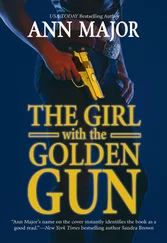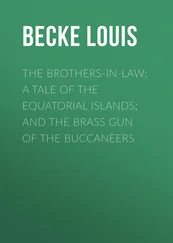He considers the Cobray pistol made by S.W. Daniel Inc., and the means by which Nicholas Elliot came to own it, a study in irresponsibility in the gun marketplace, and he testified to that effect. The gun, he argues, serves no useful purpose—certainly none of the purposes traditionally cited by the gun camp when opposing new controls. It’s not useful for hunting, Supenski said. “First of all, you couldn’t use it to hunt. Most states have a limit on magazine capacity for hunting, three to five rounds. [The Cobray has a thirty-two-round magazine.] Second, most states have a minimum-caliber rule—clearly nine millimeter is not something you would use. It’s too big a cartridge to be used to hunt small game, it’s too small to hunt big game.”
Nor is the Cobray a target gun. Its two-inch barrel sharply reduces accuracy. It is a clumsy, heavy weapon, prone to rock up and down when fired. “It’s almost impossible to shoot one-handed, except at point-blank distances,” Supenski said. “It is a hands gun, plural, because you need both hands to employ it effectively. About the only thing you can do with it is hold it someplace in front of you, pull the trigger as fast as you can, put as many bullets out as you can, and hope like hell they’ll hit something. Now that may be nice on a battlefield. It isn’t so nice in an urban environment where that bullet may go through your bedroom into your child’s bedroom or into your neighbor’s bedroom, or may go outside and kill a passerby.”
Supenski opened his attaché case. Inside, against a thick layer of foam, was a Cobray pistol and a magazine packed with gleaming nine-millimeter cartridges. His department had confiscated the gun during an arrest; it was the same gun he had brought with him to Virginia Beach to show the jury in a civil trial against the dealer who sold a Cobray to Nicholas. He passed it to me.
Black, functional, it had none of the gleaming machined beauty of more expensive weapons. It was a brick of black steel with a pistol grip jutting from the center of its bottom face and a tiny barrel protruding from the front. To cock it, you need a good deal of strength. You pull back a black knob on top, which forces the bolt against a spring. When you pull the trigger, the bolt springs forward, stripping a fresh cartridge from the magazine and firing it. The pressure of the gases released from the cartridge forces the bolt backward, ejecting the now-empty cartridge case. An internal mechanism prevents the bolt from automatically coming forward and holds it cocked for the next shot. The gun’s ancestor was a submachine pistol, in which the bolt would immediately leap forward after each shot to fire a new round, repeating the process over and over at incredible speeds until the magazine was emptied or the shooter released the trigger.
It was undeniably, if darkly, appealing in its lethality. It was heavy, the weight of a six-pack of beer. Its grip had none of the warm, close-fitting contours of more costly guns, such as the expensive Smith & Wesson nine-millimeter Supenski carried. I held the Cobray out in front of me with one hand and tried to “acquire” the sights—that is, to line up the sight at the rear with the stub of metal at the front. The bolt knob, which protruded from a point midway along the frame, made this virtually impossible. My arm sagged. The gun was cumbersome. As trite as it sounds, however, the gun did look evil. It was a Darth Vader among guns.
Its reputation matched the look. A 1989 study by the Cox Newspapers found that the pistol ranked fourth among assault guns most often traced by the Bureau of Alcohol, Tobacco and Firearms (ATF). A study of all guns confiscated in Detroit from January of 1989 through April of 1990 put the Cobray first among assault guns, fifth among all models—higher in the rankings than guns made by Beretta, whose production dwarfs that of the S.W. Daniel company. The head of ATF’s Atlanta office told me early in 1992 that his agents conducted twenty to thirty traces involving S.W. Daniel guns each month.
The Cobray and its ancestors became the favorites of drug rings, street gangs, and assorted killers throughout the 1980s. Shortly after nine P.M. on June 18, 1984, a member of the Neo-Nazi Order used the Cobray’s ancestor, an Ingram MAC-10 machine pistol, to assassinate Denver talk-show host Alan Berg as he stepped from his car. Within seconds Berg suffered a devastating array of bullet wounds—thirty-four entry and exit wounds in all from a dozen .45-caliber bullets that crushed one eye, destroyed his brain, and caused massive injuries throughout his upper body. During a sweeping investigation of the Order, federal agents seized eight MACs and MAC successors. Later, on April 15, 1988, another member of the Order allegedly used a nine-millimeter MAC, converted to full auto, to kill a Missouri state trooper.
A note on terminology is in order here. A machine gun fires rifle-caliber bullets; a submachine gun fires pistol calibers. Both are fully automatic or “full-auto” weapons, meaning that they continue to fire for as long as you pull the trigger. The MAC-10, therefore, is a fully automatic submachine gun. The Cobray, which closely mimics the MAC-10 and is often described as a MAC, is a semiautomatic. A semiautomatic fires one round per pull. That the term automatic is sometimes applied to a pistol like the Colt Army .45 confuses the issue. When used to describe a pistol, automatic is simply the short form of “automatic reloading,” which means the gun uses the explosive force of each cartridge to load and cock itself after each shot. Such pistols are in fact semiautomatics.
The popular TV series “Miami Vice” fanned interest in the MAC family of weapons. “It slices, it dices,” one character said as he used a MAC to shred two female mannequins that had been chained to a wall. In March 1989, a Colorado man used a MAC-11 (a smaller cousin to the MAC-10) to kill two women and wound two deputies. The same month, Modesto, California, police arrested Albert E. Gulart, Jr., for illegal possession of explosives and found he possessed a semiautomatic variant registered to his half brother, Patrick Purdy. Two months earlier, Purdy had killed five children and wounded thirty others when he sprayed a Stockton schoolyard with an AKS rifle, a semiautomatic version of the AK-47. While investigating Purdy’s background, Stockton detectives paid Gulart a call in Modesto. The investigators said Gulart told them that before the schoolyard shootings he and Purdy had planned to kill at random a member of the Modesto police force. Gulart, according to the police account, also made a chillingly cryptic remark: “Patrick was successful in what he did, and I have a hard time driving by any school.” Although unsure just exactly what Gulart meant, Modesto police began round-the-clock surveillance, which led to the explosives arrest.
Six months later, Joseph T. Wesbecker packed himself a small arsenal, including two Cobray pistols, and marched into a Louisville, Kentucky, printing plant where he killed eight people and wounded twelve. Wesbecker never used the Cobrays, according to the Louisville homicide detective in charge of the case; he carried them in a gym bag, which he tucked under a stairway apparently because the bag interfered with his ability to handle the AK-47 he used in the shootings.
In February 1990 the Cobray came up for review by Maryland’s Handgun Roster Board, which had been created by legislation designed to restrict the sale of Saturday night specials. The S.W. Daniel handgun passed muster, but only because of the law’s strict limits on what characteristics can allow the board to ban a gun. Cornelius J. Behan, then chief of the Baltimore County police and a member of the board, found himself forced to vote for the gun. “It’s a terrible killing instrument that has no business meeting quality standards. But our law… doesn’t cover that weapon.” The day before, Behan had appeared in a full-page ad in the Sunday New York Times paid for by Handgun Control Inc. holding the gun under a bold headline that asked, “Who Goes Hunting With a MAC-11?” The third speaker, Elmer H. Tippet, also a board member and at the time head of the Maryland State Police, said he “echoed” Behan’s assessment. “I certainly question the legitimacy of a weapon like that for sporting or self-defense or anything else, but as the law is written I have no alternative other than to vote what the law says I must do, and that’s what I will do.” The gun joined the twelve hundred other handguns on the roster.
Читать дальше
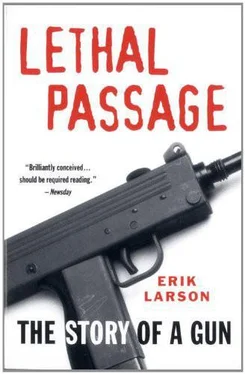
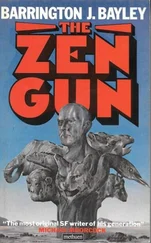
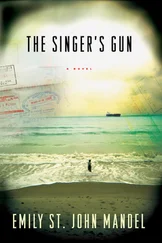

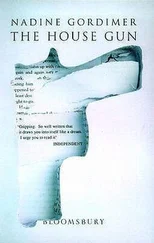

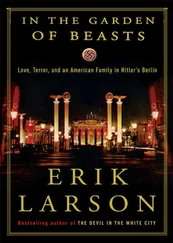

![Ричард Деминг - Whistle Past the Graveyard [= Give the Girl a Gun]](/books/412176/richard-deming-whistle-past-the-graveyard-give-t-thumb.webp)
